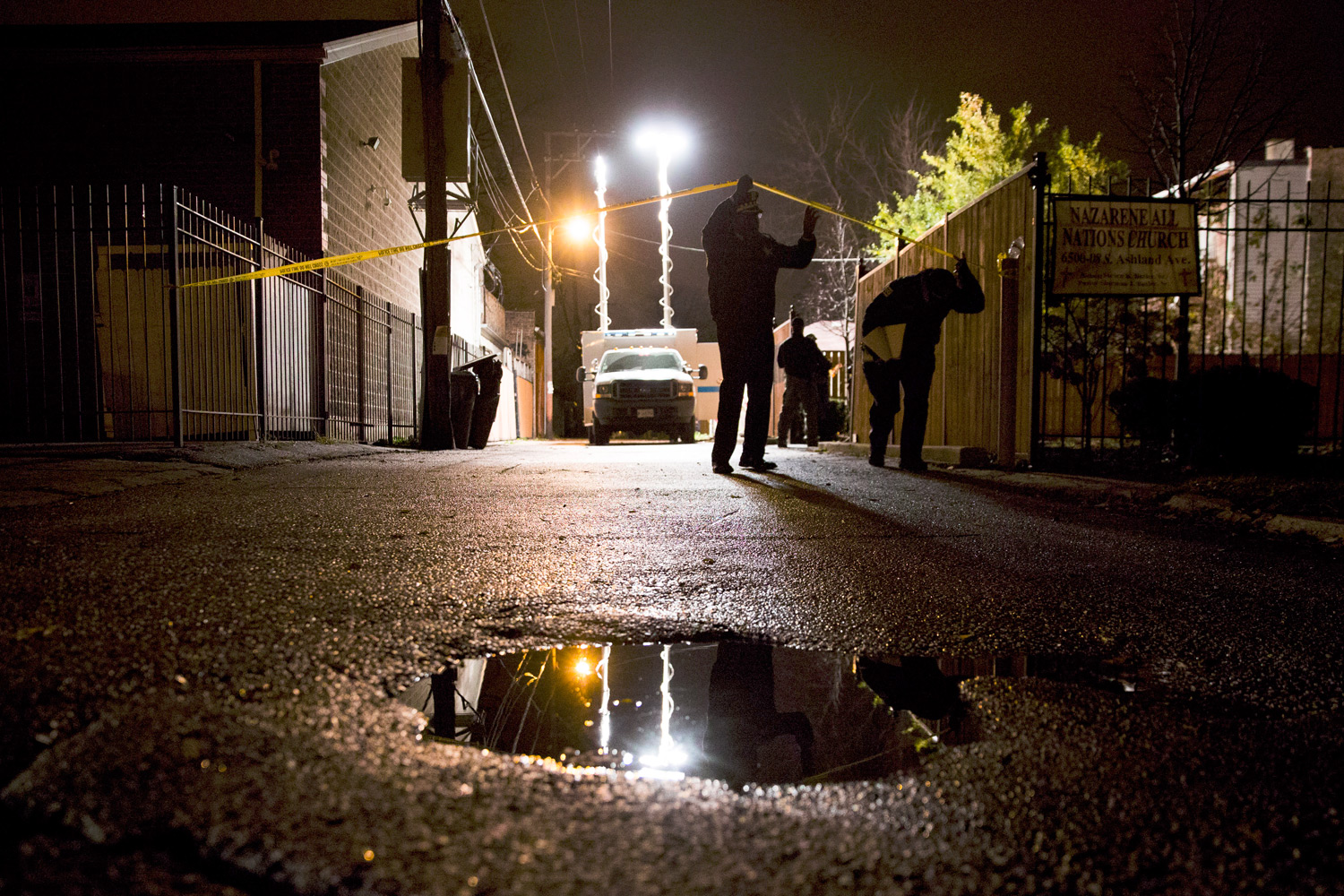The political impact of redrawing voter lines is getting fresh scrutiny thanks to a handful of recent court cases and an upcoming midterm election. A skewed election is the biggest concern that crops up in the wake of redistricting, but University of Chicago sociologist Robert Vargas is looking at another possible outcome: Violence.
His results are only preliminary, so it’s too soon to draw firm conclusions, but Vargas says the data thus far shows a correlation between violence and areas with voter boundaries that continually change.
As a follow-up to his 2016 book, Wounded City: Violent Turf Wars in a Chicago Barrio, Vargas is in the midst of researching how rates of violence in Chicago relate to the stability of voting districts. Using Chicago census tracts with roughly equivalent racial makeup and poverty levels, Vargas is comparing the level of violence in tracts that have been split among different city council voting districts since the 1960s to tracts that have consistently remained in one voting district. And his research is already suggesting that frequently redistricted areas, like Little Village, experience a rate of violence “two to three times higher” than in areas with more stable districting, like Bridgeport and Beverly.
“From 2012 to 2014, about half of Chicago’s violent crimes took place within just five percent of its city blocks,” Vargas tells Chicago. “Along the way, the eastern cluster of Little Village’s high-crime blocks got split among three districts. This meant its residents became a very small share of each district’s voters—and I suspect aldermen have little incentive to focus on those residents’ particular interests or needs.”
Vargas encountered frustration from residents with real plans to counter the violence in their neighborhoods.
“I expected to find stereotypes: people in despair, people who were cynical and had given up, or people who were apathetic to what’s going on,” Vargas admits. “But I found the opposite: People were doing whatever they could.”
He also found that it was difficult for constituents to form bonds with the politicians and affiliated non-profits that could boost their anti-violence efforts. Consequently, some residents will broker informal agreements with gang members instead. Vargas says with little political power to pressure their local officials into action, they try to establish some form of social order by promising they won’t call the cops on gang activity so long as the gang members move their business to another block.
“It solves their problem, but it just pushes the problem somewhere else,” he says.
Due to privacy agreements, Vargas can’t name the specific non-profits that he’s encountered during his research. But he says he’s repeatedly found situations where residents in violent neighborhoods were stymied by groups that are ostensibly meant to help them.
“When non-profits do work, they want to make sure they’re getting good press for the alderman who helped them get funding; they sure as hell aren’t going to work in a rival’s ward,” he says. He suspects that where non-profits reliant on cooperative city officials are concerned, if it’s not in their district, it’s not their problem.
The zero-sum mentality—what Vargas calls “toxic competitiveness” among supposedly like-minded organizations—is the biggest surprise he’s encountered during his research so far.
“How are people [who are] so invested in saving people’s lives in such a vicious competition with each other?” Vargas says. “It’s such a ‘divide and conquer’ way of managing the city.”
Zachary Fardon, the former U.S. Attorney in Chicago, touched on that very issue when he was still a federal prosecutor. In a 2016 speech at the City Club of Chicago, Fardon revealed that he’d been on a discreet “listening tour” with local anti-violence groups across the city in an effort to understand “the other piece of the puzzle” beyond law enforcement in the city’s anti-violence efforts.
He described how the groups worked in “silos,” scattered across the city and without a unifying plan or vision. On top of that, they were usually competing against each other for money.
“The funding mechanisms—whether state, federal or philanthropic—are annualized, are hyper- competitive and are data-driven,” Fardon said at the time. “Many of these organizations compete all year, every year, to protect their numbers and bring in the funding dollars just to survive.”
Both Fardon and Vargas are critical of the funding paradigm for Chicago’s anti-violence non-profits, but Vargas thinks it also shows that in some ways, the city is getting exactly what it wants out of the current system.
“The city is all about managing violence rather than eradicating it; that’s a big conceptual difference,” he says. “The city doesn’t want violence to happen categorically, but when you look at how they manage the problem in practice, they’re managing the problem in a way that manages or protects their interests.”



